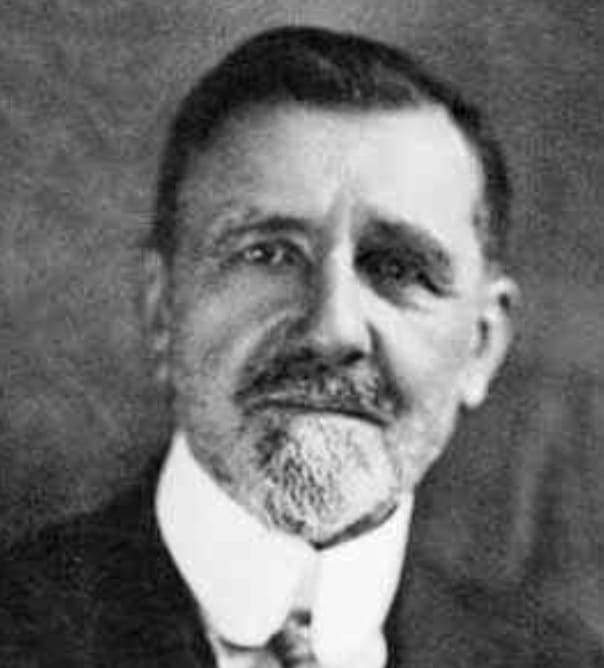
Émile Borel was born on January 7, 1871, in Saint-Affrique, France. He attended his father’s school for Protestant children until age eleven when he went to live with his eldest sister. This enabled him to attend the Lycée at Montauben where his exceptional ability was first recognized. After leaving Montauben, he traveled to Paris where he took courses at the Lycée Louis-le-Grand to qualify for entrance to the École Polytechnique and the École Normale. While at the Lycée, he befriended a fellow student who turned out to be the son of mathematician Gaston Darboux. Through this connection, he was introduced to the prominent mathematician Émile Picard who would become a major influence in his life.
In 1889, when Émile stood first in the entrance examinations to both institutions and won first prize in the Concours Général, his friends and relatives urged him to choose the more prestigious École Polytechnique, but in 1889, at the age of 18, Émile enrolled in the École Normale, believing it was more closely connected to his interest in mathematics and science.
In 1890, while still an undergraduate, Émile published his first two mathematical papers, and within two years was awarded the agrégation in mathematics, enabling him to earn a stipend by teaching in the college. A year later, at the age of 22, he earned his doctorate for his thesis Sur quelques points de la théorie des fonctions, (On Some Points in the Theory of Functions) that was supervised by Gaston Darboux. In that thesis, Borel laid out the foundations of measure theory, culminating in the enunciation and proof of what has become known as the celebrated Heine-Borel Theorem. (Borel’s formulation of the theorem was restricted to countable covers.)
After completing his doctorate, Borel was appointed Maître de Conférence (Assistant Professor) at the University of Lille. Within 3 years at Lille, he published 22 papers of significant quality. In 1897, he returned to Paris in the role of Maître de Conférence at the École Normale Supérieure, and through the turn of the century, received numerous awards including the Grand Prix of the Academy of Sciences (1898), the Poncelet Prize (1901) and the Vaillant Prize (1904). In 1905, he was elected the president of the French Mathematical Society, and in 1910 was appointed to the prestigious position of Deputy Director of the École Normale Supérieure, reflecting the high esteem in which he was held.
At the outbreak of World War I, Borel volunteered for military service and was assigned the command of an artillery battery. He continued to serve throughout the war and in 1918, received the Croix de Guerre for his service. When he returned to the École Normale after the war, he had difficulty adjusting to a new reality. His son and half of his former students had been killed and Borel’s chaste and austere world of pure mathematics had been invaded by the intrusion of a cruel reality. His interests shifted somewhat from his research in measure theory and analysis to probability theory, philosophy and politics. He used his work on measure theory and its applications to underpin the foundations of probability theory. Introducing the concept of normal numbers, he formulated Borel’s law, describing the statistical distribution of digits in certain types of numbers.
Between 1921 and 1927, Borel published a series of papers on what later became known as game theory. Using poker as a model, he addressed the strategy of bluffing in a game of imperfect information, envisioning game theory as a technique with applications in economic and military contexts. His ultimate goal was to determine whether a “best” strategy for a given game exists and to find that strategy, but he did not develop the theory in significant depth. However, these seminal ideas inspired the quintessential genius, John Von Neumann, to published his first paper on game theory in 1928 and further develop its foundations in the next two decades.
During the decade following World War I, Borel became increasingly engaged in politics, publishing in 1924 La politique républicaine in which he proposed ideas for a united Europe that could avert future wars. He subsequently served in the French Chamber of Deputies and the French Senate. Yet, the wars he hoped to avert were still incubating during this decade and in 1939, World War II invaded Borel’s world. While working with the French Resistance, during the Vichy regime, he continued to produce insightful works in probability theory, including Valeur pratique et philosophique des probabilités (1939), (with André Chéron) Théorie mathématique du bridge à la portée de tous (1940), Le jeu, la chance et les théories scientifiques contemporaines (1941), Les probabilités et la vie (1943), and Evolution de la mécanique (1943). These publications had continued throughout his month-long arrest and imprisonment for his participation in the Resistance movement. After the war, Émile Borel was awarded the Médaille de la Résistance with rosette, and the Grand Croix Légion d’Honneur (1950).
In 1946, at the age of 75, Borel published Les paradoxes de l’infini, followed by Eléments de la théorie des ensembles (1949), Les nombres inaccessibles (1952), and L’imaginaire et le réel en mathématiques et en physique (1952). On February 3, 1956, four years after his last publication, Émile Borel passed away in Paris at the age of 85.
Throughout his career, Borel received numerous honors for his contributions to mathematics, including being elected to the French Academy of Sciences. His legacy remains influential in the field of mathematics, particularly in the realms mathematical analysis, and the foundations of probability and their applications. In his book, Probabilities and Life, Borel observed:
Probabilities must be regarded as analogous to the measurement of physical magnitudes; that is to say, they can never be known exactly, but only within certain approximation.
